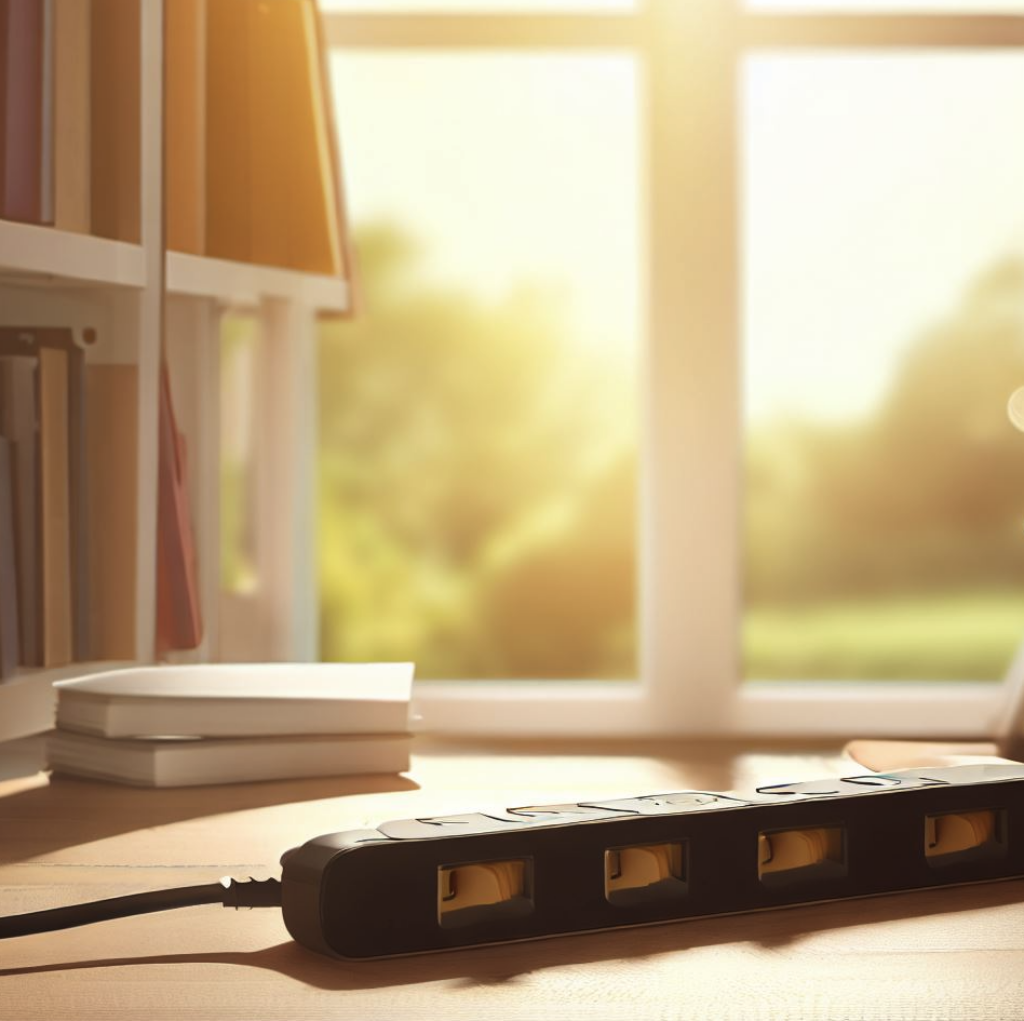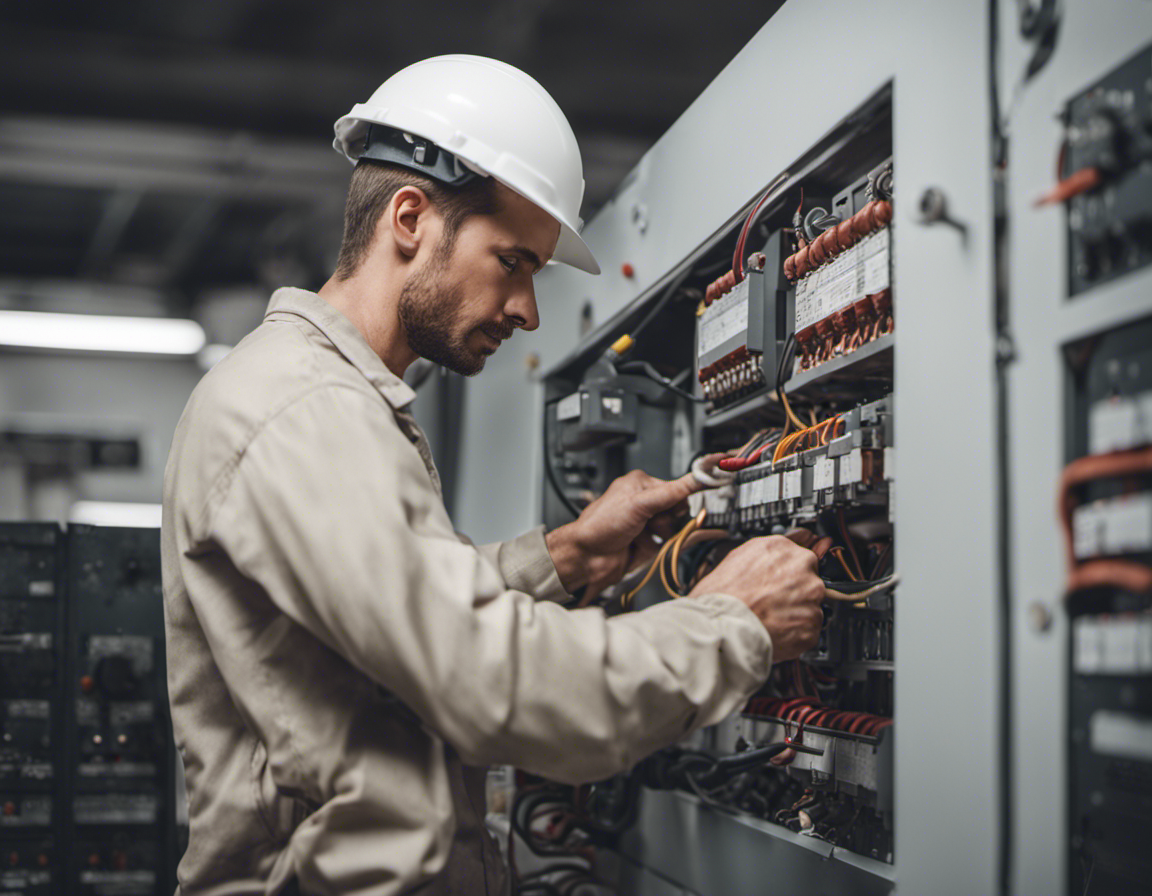Published By: Marc Edwards | Last updated on January 24, 2024 and reviewed by GagSurgeAdmin
Steven is a tech-savvy client of mine whose life revolves around a huge assortment of electronic gadgets. From his trusty laptop to his entertainment center and the multitude of chargers that seem to be scattered everywhere in his hi-tech smart home.
But lately, a rather vexing problem has been plaguing him.
It all began with a lightning storm that had Steven scrambling to unplug his precious devices. Anxious about potential damage from power surges, he invested in a surge protector. It seemed like the perfect solution – a guardian angel against electrical hazards.
However, as the days turned into weeks, a persistent annoyance started creeping into Steven’s life – his surge protector keeps tripping, more frequently than an irritating alarm clock on a Monday morning.
The mysterious problem had Steven perplexed and increasingly frustrated. He couldn’t enjoy a Netflix binge without the inevitable interruption of his entertainment center going dark.
As a last resort, he decided to call me. I told him he was not alone as it was a very common issue among my clients.
In the next few sections, I will go through the reasons why surge protectors keep tripping as well as providing solutions to help your electrical appliances avoid such unnecessary electrical turbulence.
Key Takeaways
Surge Protectors Safeguard Electronics
Emphasize the critical role of surge protectors in protecting electronic devices from voltage spikes and surges.
Tripping Indicates Protection
Explain that surge protector tripping is a sign that the device is functioning correctly by disconnecting power to prevent damage.
Troubleshooting and Maintenance
Encourage users to follow a structured troubleshooting process to identify and address tripping issues promptly. Stress the importance of regular maintenance, including periodic replacement of surge protectors.
What Does it Mean When a Surge Protector “Trips”?
Understanding why a surge protector “trips” is key to addressing the issue effectively. When a surge protector trips, it means that it has detected a voltage surge or an overcurrent condition that exceeds its designed capacity to protect connected devices. This can happen for various reasons, and the surge protector responds by temporarily disconnecting power to the devices it is safeguarding.
Causes of Surge Protector Tripping
Understanding the causes behind surge protector tripping is crucial for diagnosing and resolving the issue effectively. Surge protectors are designed to trip when they detect conditions that could potentially harm connected devices. Here, we explore some of the primary reasons why surge protectors may trip:
Voltage Spikes and Fluctuations
Voltage spikes, often caused by lightning strikes, sudden power surges, or electrical faults, are one of the most common triggers for surge protector tripping. When the voltage exceeds the surge protector’s capacity to suppress, it responds by disconnecting the power supply temporarily. This action is taken to shield connected devices from the damaging effects of the spike.
Understanding the characteristics and sources of voltage spikes is essential for mitigating this cause of tripping and enhancing surge protection.
Overloading the Surge Protector
Surge protectors come with a specified load capacity, typically measured in amps or watts. Exceeding this capacity by connecting too many devices or high-power equipment can overload the surge protector, leading to tripping. Users must be aware of the load limits and distribute their devices accordingly to prevent overloading.
Faulty Surge Protectors
Surge protectors, like any electrical devices, can degrade or become faulty over time. Components within the surge protector may wear out, rendering it less effective or causing it to trip unnecessarily. In some cases, manufacturing defects or damage during shipping can result in a surge protector being faulty from the outset.
This section will guide users on how to identify signs of a faulty surge protector and the importance of periodic maintenance and quality assurance when purchasing surge protection devices.
Grounding Issues
Proper grounding is a critical factor in the reliable operation of surge protectors. If a surge protector is not correctly grounded, it may not function as intended, leading to tripping or reduced protection. Exploring the importance of grounding and providing guidance on how to ensure proper grounding will be discussed in this section.
By addressing these common causes of surge protector tripping, users can take proactive steps to prevent disruptions to their electronic equipment and ensure the effectiveness of their surge protection systems.
Signs of a Tripping Surge Protector
Recognizing the signs of a tripping surge protector is essential for diagnosing and addressing the issue promptly. In this section, we will explore the various indicators and symptoms that may suggest a surge protector has tripped:
Indicator Lights and Their Meanings
Most surge protectors are equipped with indicator lights to convey important information about their status. Understanding these indicator lights is crucial for determining whether the surge protector has tripped and why. Common indicator lights include:
- Power LED: This light typically indicates that the surge protector is receiving power from the outlet. A sudden loss of this light may suggest a tripped surge protector.
- Protected LED: The protected LED confirms that the surge protector is operational and actively protecting connected devices. If this light goes out, it could indicate a trip or a fault in the surge protector.
- Grounding LED: A grounding LED confirms that the surge protector is properly grounded. If this light is not lit, it may indicate a grounding issue.
By interpreting the meaning of these indicator lights, users can quickly assess the status of their surge protector and determine whether tripping has occurred.
Flickering Lights or Sudden Device Shutdowns
Tripping surge protectors can manifest as flickering lights or sudden, unexpected shutdowns of connected devices. Users may notice their computer, home theater system or other electronics abruptly turning off and then back on. These interruptions can disrupt work, damage data, and potentially harm sensitive equipment.
Understanding that such disruptions may be related to surge protector tripping is the first step in diagnosing the issue.
Burning Smells or Unusual Sounds
In some cases, a tripped surge protector may emit unusual odors or sounds. A burning smell, sparking, or crackling noises coming from the surge protector or nearby outlets could indicate a serious issue. Users should take these signs seriously as they may signal not only tripping but also potential safety hazards.
This section will provide guidance on how to respond when encountering these signs, emphasizing the importance of safety and immediate action in certain situations.
By being aware of these signs, users can quickly identify when a surge protector has tripped and take appropriate measures to investigate and address the underlying causes, ensuring the continued protection of their electronic devices.
Troubleshooting Surge Protector Tripping

Step-by-Step Guide to Diagnosing the Issue
Step 1: Visual Inspection
- Visually examine the surge protector, its power cord, and the connected devices for any obvious signs of damage or wear.
- Check if the indicator lights on the surge protector are illuminated as expected.
Step 2: Unplug All Devices
- Safely disconnect all devices from the surge protector by unplugging them.
- Ensure that the surge protector is completely disconnected from the power source.
Step 3: Check for Overloading
- Review the total power consumption of the devices connected to the surge protector. Ensure it does not exceed the protector’s rated capacity (in watts or amps).
Step 4: Inspect Outlet and Wiring
- Inspect the electrical outlet where the surge protector is plugged in. Ensure it is in good condition.
- Examine the surge protector’s power cord for any damage or fraying.
- Check the surge protector’s ground wire and ensure it is securely connected.
Step 5: Reset the Surge Protector
- If the surge protector has a reset button, press it to reset the device.
- Some surge protectors may require you to unplug them and wait for a few seconds before plugging them back in to reset.
Step 6: Reconnect Devices
- Gradually reconnect the devices one by one, starting with the most critical ones.
- Observe the surge protector’s indicator lights and the behavior of the connected devices.
Testing the Surge Protector’s Functionality
Step 7: Use a Surge Test Function (If Available)
- Some surge protectors have a built-in surge test function that allows you to simulate a surge without causing harm to your devices. Use this function to verify the protector’s response.
Step 8: Replace with a Known-Good Surge Protector
- If you have access to another surge protector that you know is functioning correctly, swap it with the potentially faulty one to see if the problem persists.
Step 9: Professional Inspection
- If troubleshooting steps do not resolve the issue, or if there are signs of physical damage or unusual odors, consult a professional electrician or technician to inspect the surge protector and your electrical system.
By following these troubleshooting steps, users can systematically identify the cause of surge protector tripping and take appropriate actions to rectify the issue, whether it’s related to overloading, faulty equipment, or other factors. Timely and accurate troubleshooting is key to maintaining the reliability of surge protection for connected devices.
Preventive Measures
To avoid the inconvenience and potential damage associated with surge protector tripping, it’s essential to take preventive measures. This section will explore various strategies and practices that can help users maintain a reliable surge protection system and minimize the risk of tripping:
Proper Installation and Grounding
Outlet Selection:
- Choose electrical outlets that are in good condition and compatible with surge protectors.
- Avoid using damaged or worn-out outlets that may not provide a secure connection.
Correct Installation:
- Follow the manufacturer’s instructions for correctly installing the surge protector.
- Ensure a snug fit between the surge protector plug and the outlet.
Grounding:
- Confirm that the surge protector is effectively grounded to redirect excess voltage safely.
- If uncertain about the grounding, consider consulting an electrician for verification.
Load Management and Avoiding Overloads
Load Calculation:
- Calculate the total power consumption of devices connected to the surge protector.
- Stay within the surge protector’s rated capacity (watts or amps) to prevent overloading.
Distributed Outlets:
- Distribute high-power devices evenly across multiple surge protectors or outlets.
- Avoid daisy-chaining surge protectors, as this can increase the risk of overloads.
Regular Maintenance of Surge Protectors
Periodic Inspections:
- Regularly inspect surge protectors and their indicator lights to ensure proper functioning.
- Replace surge protectors that show signs of wear, damage, or tripping issues.
Surge Protector Age:
- Consider replacing surge protectors every few years, as they may become less effective over time.
- Some surge protectors have indicator lights that signal when they need replacement.
Professional Consultation
Complex Issues:
- For complex electrical issues or recurring tripping problems, consult with a licensed electrician or a surge protection specialist.
- Professionals can assess the wiring, grounding, and overall electrical system for potential improvements.
By implementing these preventive measures, users can enhance the reliability of their surge protection systems, reduce the likelihood of surge protector tripping, and ensure the continued safety of their electronic devices. Preventive actions are an investment in the long-term functionality of valuable electronics and data.
Safety Considerations
Maintaining safety while dealing with electrical equipment, including surge protectors, is paramount. This section focuses on essential safety considerations when addressing surge protector issues and handling electrical systems:
Importance of Safety in Handling Electrical Equipment
Electrical Hazards:
- Recognize the potential hazards associated with working on electrical systems, including the risk of electrical shock and fires.
- Understand the importance of safety precautions to protect yourself and others.
Unplug Before Maintenance:
- Always disconnect surge protectors and devices from the power source before performing maintenance or troubleshooting.
- Use appropriate safety measures such as insulated gloves and tools when working with electrical equipment.
Avoiding DIY Fixes for Tripping Surge Protectors
Professional Expertise:
- Encourage users to seek professional assistance when dealing with complex electrical issues.
- DIY fixes can lead to safety risks and may not address the root cause effectively.
Reading Manufacturer Guidelines:
- Follow the manufacturer’s guidelines and recommendations for surge protector maintenance and troubleshooting.
- Attempting DIY repairs or modifications can void warranties and compromise safety.
Consulting with Professionals for Complex Issues
Licensed Electricians:
- When surge protector tripping issues persist or when addressing whole-house surge protection, consult a licensed electrician.
- Electricians can assess the electrical system’s integrity, recommend solutions, and ensure compliance with local electrical codes.
Surge Protection Specialists:
- Consider the expertise of surge protection specialists who can evaluate specific surge protection needs and provide tailored solutions.
- Specialists can help design surge protection systems for residential and commercial environments.
Regular Electrical Inspections
Scheduled Inspections:
- Promote regular inspections of electrical systems, including surge protection devices, to identify potential issues before they escalate.
- Inspections can uncover wiring problems, grounding issues, and other electrical concerns.
Periodic Maintenance:
- Emphasize the importance of routine maintenance for surge protectors to ensure their continued effectiveness.
- Regular maintenance can extend the lifespan of surge protection equipment.
A surge protection device is an essential safeguard for your electronic devices, but when it starts tripping frequently, it’s essential to address the underlying causes promptly. By understanding the reasons behind surge protector tripping and implementing the appropriate solutions, you can ensure the continued safety and functionality of your valuable electronics. Remember, a well-maintained surge protector is your first line of defense against electrical surges in an increasingly connected world.
FAQs (Frequently Asked Questions)
What causes a surge protector to trip?
A surge protector may trip due to several reasons, including voltage spikes, overloading, grounding issues, or internal faults. When it detects conditions beyond its protective capacity, it disconnects power to prevent damage to connected devices.
How can I reset a tripped surge protector?
To reset a tripped surge protector, unplug it from the power source and wait for a few seconds before plugging it back in. Some surge protectors have a reset button that you can press to reset them.
Can I plug a surge protector into another surge protector?
No, it’s not recommended to daisy-chain surge protectors by plugging one into another. This can lead to overloading and reduce the effectiveness of surge protection. Instead, use multiple surge protectors at different outlets as needed.
How often should I replace my surge protector?
Surge protectors have a limited lifespan, typically ranging from 3 to 5 years for consumer-grade models. Consider replacing them within this timeframe or when indicator lights suggest replacement.
Do I need surge protection for all my devices?
While not every device requires surge protection, it’s advisable to protect valuable and sensitive electronics like computers, TVs, and home theater systems. Consider whole-house protection for comprehensive coverage.
Are power strips the same as surge protectors?
No, power strips and surge protectors are not the same. Power strips provide additional outlets but do not offer surge protection. Surge protectors include surge suppression features to safeguard connected devices.
Can surge protectors prevent lightning damage?
Surge protectors can mitigate the damage caused by lightning-induced surges to some extent, but they may not provide full protection against direct lightning strikes. Consider whole-house surge protection for better lightning protection.
Are smart surge protectors worth it?
Smart surge protectors offer added convenience with features like remote monitoring and app-based control. They can be beneficial for those who want more control and real-time information about their surge protection system.
How can I test if my surge protector is still working?
Some surge protectors have a surge test function that allows you to simulate a surge without harming your devices. Check your surge protector’s user manual to see if this feature is available.
Can I use a surge protector with an uninterruptible power supply (UPS)?
Yes, using a surge protector with a UPS is a common practice. Surge protectors can provide additional surge protection to devices connected to the UPS, enhancing their overall protection.










